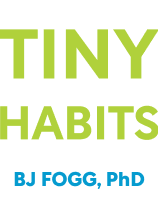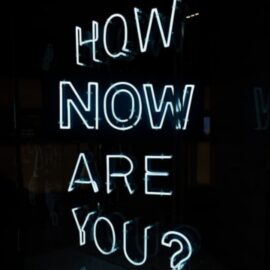

This article is an excerpt from the Shortform book guide to "Tiny Habits" by BJ Fogg. Shortform has the world's best summaries and analyses of books you should be reading.
Like this article? Sign up for a free trial here .
What is the Fogg behavior model? What does the equation B = M A P mean? What is the difference between a behavior and an aspiration?
If you were told to set aside $500 in your savings account right now, could you? There is a difference between aspiring to do something, and actually breaking down the steps to do it. The Fogg Behavior Model is a simple way of breaking down the components of behavior.
Continue on to learn more about the Fogg Behavior Model.
The Fogg Behavior Model
The Fogg Behavior Model is a simple way of breaking down the components of a particular behavior. This helps us to understand the causes of the behavior, which in turn lets us pinpoint any problem elements and address them directly.
B = M A P
Behavior (B): The specific action we’re considering.
This formula applies to any human behavior, from dropping dirty clothes on the floor to climbing Mount Everest. This means that the model applies regardless of culture or environment, and regardless of the ease or difficulty of the behavior.
Motivation (M): Your desire to execute the behavior.
Motivation fluctuates wildly from day to day and from behavior to behavior. Here, we’re talking about the motivation you have at the exact time you’ll execute a given instance of the behavior.
Ability (A): Your capacity to execute the behavior.
This includes two main dimensions: your own skills related to this behavior, and the difficulty of the behavior itself.
Prompt (P): The cue that reminds you to execute the behavior.
While motivation and ability can vary, prompts are binary. You either notice them or you don’t.
For a behavior to occur, M, A, and P must all be present simultaneously. If one is missing, the behavior won’t happen.
The model builds in individual differences. M, A, and P for a given behavior vary widely between individuals, and will even be different for the same individual in different contexts and at different times. Experimenting with all of these variables will teach you the best way to configure your new habits.
Note that this model does not model the general characteristics of a behavior. Instead, it applies to one instance of the behavior at a given point in time.
For example, let’s say you want to introduce the behavior of going to the gym. Your motivation to do this will vary from moment to moment. Your ability will also vary: Sometimes it’s easier to go to the gym (perhaps when you have less going on at work) and sometimes it’s more difficult. And at any point in time, you may or may not have a prompt reminding you to go to the gym.
The model doesn’t help us much with the general idea of going to the gym, because there’s so much variation in M, A, and P. But if we think instead about going to the gym right now, the motivation and prompt components are more fixed. Now we can apply the model with more accuracy.
Tiny Habits uses the Fogg Behavior Model as its basis.
Breaking Down the Fogg Behavior Model
Recall that the structure of the Fogg Behavior Model is B = MAP. Let’s consider Behavior, Motivation, Ability, and Prompt in turn.
What Is a Behavior?
Most people confuse behaviors, aspirations, and outcomes.
An aspiration is a desire for something abstract (become a lawyer; get rich). An outcome is similar to an aspiration, but more concrete (pass the bar exam; earn 30% more in commissions. A behavior is much more specific: it’s something you can do at a given time (open a law textbook; make a sales call).
We don’t use the word “goal” in Behavior Design because it isn’t clearly defined—it could apply to any of the above.
Think of your aspiration as the top of a cliff face you’re climbing. Your behaviors are like the jutting pieces of rock you hold onto to pull yourself higher. There’s no prescribed way to climb the rock—you choose the path—but the behaviors that support you should be solid and dependable.
You can disambiguate between behaviors and aspirations or outcomes with one question: Can I do it at a given time (for example, right now)?
Fogg encountered this common confusion between behaviors and aspirations in his consulting work at a bank. The bank had introduced a new initiative to encourage people to put aside a $500 emergency fund. He asked the staff, “What behavior do you want people to do?” They answered, “Save $500.” He replied, “OK, all of you save $500 right now.” This made them realize that they needed to be more specific in their suggestions—to target the “how” and not the “why.”
The “how” is the step that most people overlook. The strength of Behavior Design is that it makes “how” the focus. Think of Marie Kondo’s smash hit books on tidying up. These books don’t focus on why you should be tidying up. They take you through the concrete steps of how to do it.

———End of Preview———
Like what you just read? Read the rest of the world's best book summary and analysis of BJ Fogg's "Tiny Habits" at Shortform .
Here's what you'll find in our full Tiny Habits summary :
- How you can successfully create new habits that stick
- Why you don't need motivation, just science
- Why even flossing one tooth should be considered a victory






